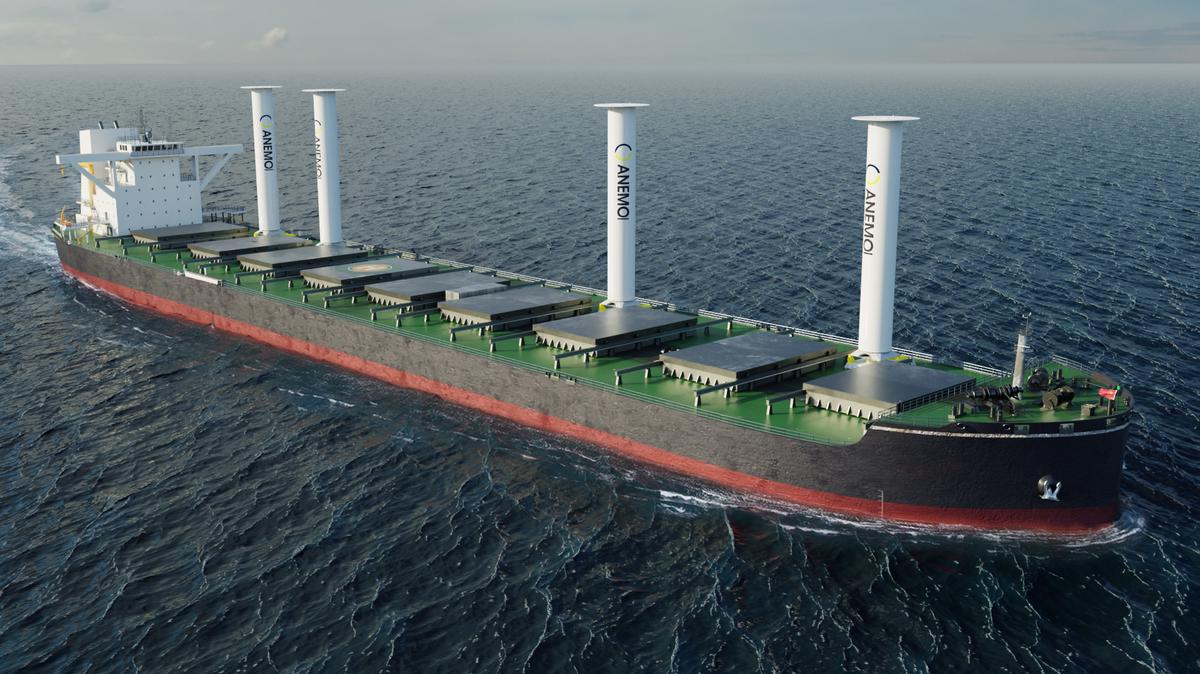Lloyd’s Register study found 29% fuel savings from rotor sails
An assessment by Lloyd’s Register found that bulk carriers can improve their energy efficiency by up to 29% through installing six 5x30-metre rotor sails.
 PHOTO: A model of a newcastlemax bulk carrier with Anemoi's rotor sails fitted. Anemoi
PHOTO: A model of a newcastlemax bulk carrier with Anemoi's rotor sails fitted. Anemoi
Shipping classification society Lloyd’s Register has granted an Approval in Principle (AIP) to a 210,000 dwt Newcastlemax bulk carrier with rotor sails installed.
The vessel was built by China's Shanghai Merchant Ship Design and Research Institute (SDARI) and fitted with rotor sails from the British wind technology firm Anemoi Marine Technologies.
A rotor sail is a modern version of flettner rotor that is based on the Magnus effect, which creates air pressure to cause spinning.
During favourable wind conditions, the rotor sails will allow the vessel's main engine to throttle back and save fuel consumption while providing enough power to maintain speed.
When the wind reaches the spinning rotor sails, the airflow increases on one side of the rotor sails and reduces on the opposite side. The change in speed results in a pressure difference that creates a lift force that is perpendicular to the wind flow direction.
By even installing four 5x35-metre folding rotor sails, up to 23% of fuel saving can be achieved, Lloyd's Register estimates say. Six rotor sails can bring those savings up to 29%.
The AiP is part of a joint development project (JDP) between Anemoi, Lloyd’s Register, SDARI and other partners. They also plan to develop rotor sails for VLCCs and other tanker vessel types as part of the project.





